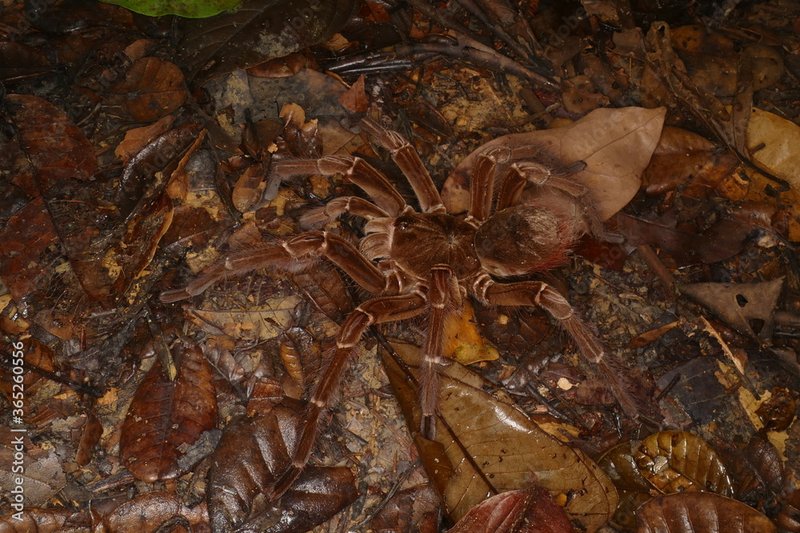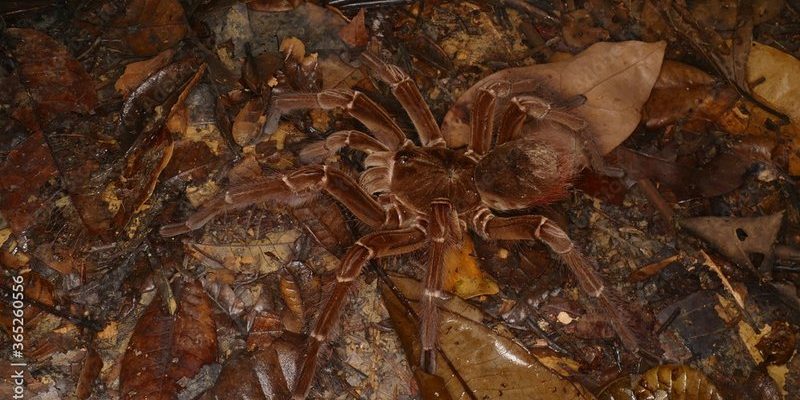
This fascinating spider doesn’t just take home the title for size; it also lives in some of the most vibrant and biodiverse habitats on the planet. If you’re curious about where these giant arachnids roam free, you’re in the right place. Let’s dive into the intriguing world of the Goliath Birdeater and discover its natural habitat, lifestyle, and why it matters.
Understanding the Habitat of the Goliath Birdeater
The Goliath Birdeater calls the rainforests of South America its home. This area is a lush paradise teeming with life, making it a perfect spot for such an impressive creature. You might be wondering why these spiders thrive in rainforests. Well, it turns out that these spiders love warm, humid environments that provide a constant supply of moisture. The lush vegetation offers plenty of hiding spots, which is crucial for both hunting and avoiding predators.
Typically, you can find the Goliath Birdeater in places like the Amazon Basin, which stretches through several countries, including Brazil, Venezuela, Colombia, and Suriname. Think of the Amazon as the ultimate playground for these giant spiders: warm temperatures, abundant food sources, and a rich ecosystem where they can thrive.
Geographical Distribution of the Goliath Birdeater
Now that we know where they live, let’s get a bit more specific. The Goliath Birdeater’s geographical distribution is primarily focused on the northern part of South America. In particular, they are spotted in regions with dense tropical rainforests where the canopy creates a suitable microclimate.
– Brazil: One of the largest habitats for the Goliath is in the Amazon rainforest. Here, the sprawling jungle offers countless crevices and burrows.
– Venezuela: These spiders are also common in Venezuela’s rainforests, where they enjoy the humid conditions that help them survive.
– Colombia and Suriname: In Colombia, the spider can often be found in the dense vegetation, while Suriname offers a mix of swampy areas and fertile forests perfect for burrowing.
Each of these regions plays a significant role in the ecosystem, supporting both the Goliath and other species. It’s like a giant spider community party!
Behavior and Lifestyle of the Goliath Birdeater
You might think that such a massive spider would be aggressive, but the Goliath Birdeater is actually quite shy. These spiders tend to stay hidden, emerging mainly at night when they hunt. They’re not the kind of spider you’ll find hanging out in open areas or on tree branches like others. Instead, they prefer lurking in their silk-lined burrows, waiting for unsuspecting prey.
Their diet consists of a variety of creatures, including insects, frogs, and yes—even small birds! This has earned them their “birdeater” nickname, although it’s rare for them to take down anything larger than a small bird. When hunting, they rely on their incredible speed and stealth, a bit like a ninja in the spider world.
Climate Conditions Favorable for the Goliath Birdeater
Rainforests provide more than just food and shelter; the climate is essential for the survival of the Goliath Birdeater. These spiders thrive in warm, humid conditions with temperatures typically ranging from 75°F to 90°F (24°C to 32°C). The ample rainfall keeps their burrows moist, which is vital for their survival.
Interestingly, if the environment gets too dry, it can pose serious risks. The Goliath needs humidity to molt and breathe properly. Without this, they face a greater chance of stress or even death. So, the rainforest isn’t just a home; it’s a carefully balanced ecosystem that ensures their survival.
Conservation Status of the Goliath Birdeater
With growing concerns about habitat destruction, the Goliath Birdeater faces increasing threats. Deforestation for agriculture, logging, and urban expansion endangers their fragile habitat. Even though they are not currently considered endangered, their numbers are declining. Preserving the rainforests is crucial not just for the Goliath but for countless other species that share this unique environment.
Many researchers and conservationists are actively working to protect these rainforests, highlighting the importance of conserving ecosystems that are home to incredible species like the Goliath Birdeater. By raising awareness and encouraging responsible environmental practices, we can help ensure these giant spiders continue to thrive in the wild.
Why the Goliath Birdeater Matters
You might be wondering, “Why should I care about a massive spider?” Well, the Goliath Birdeater plays a vital role in its ecosystem. By being both predator and prey, it helps maintain a balanced food web. This spider controls insect populations and also provides a food source for larger predators, helping keep the ecosystem in check.
Furthermore, studying these spiders can offer insights into biodiversity and ecosystem health. They’re like tiny indicators of the overall wellbeing of their rainforest habitats. Keeping the Goliath Birdeater safe means protecting the entire ecosystem, which ultimately benefits us all.
In conclusion, the Goliath Birdeater might look intimidating, but it’s also a fascinating creature that plays a crucial role in its environment. Found primarily in the lush rainforests of South America, this spider thrives in warm, humid conditions and lives a quiet life filled with unique behaviors. Protecting their habitat is essential—not just for them, but for the entire ecosystem. So next time you think about these giant spiders, remember there’s a lot more to them than meets the eye!

